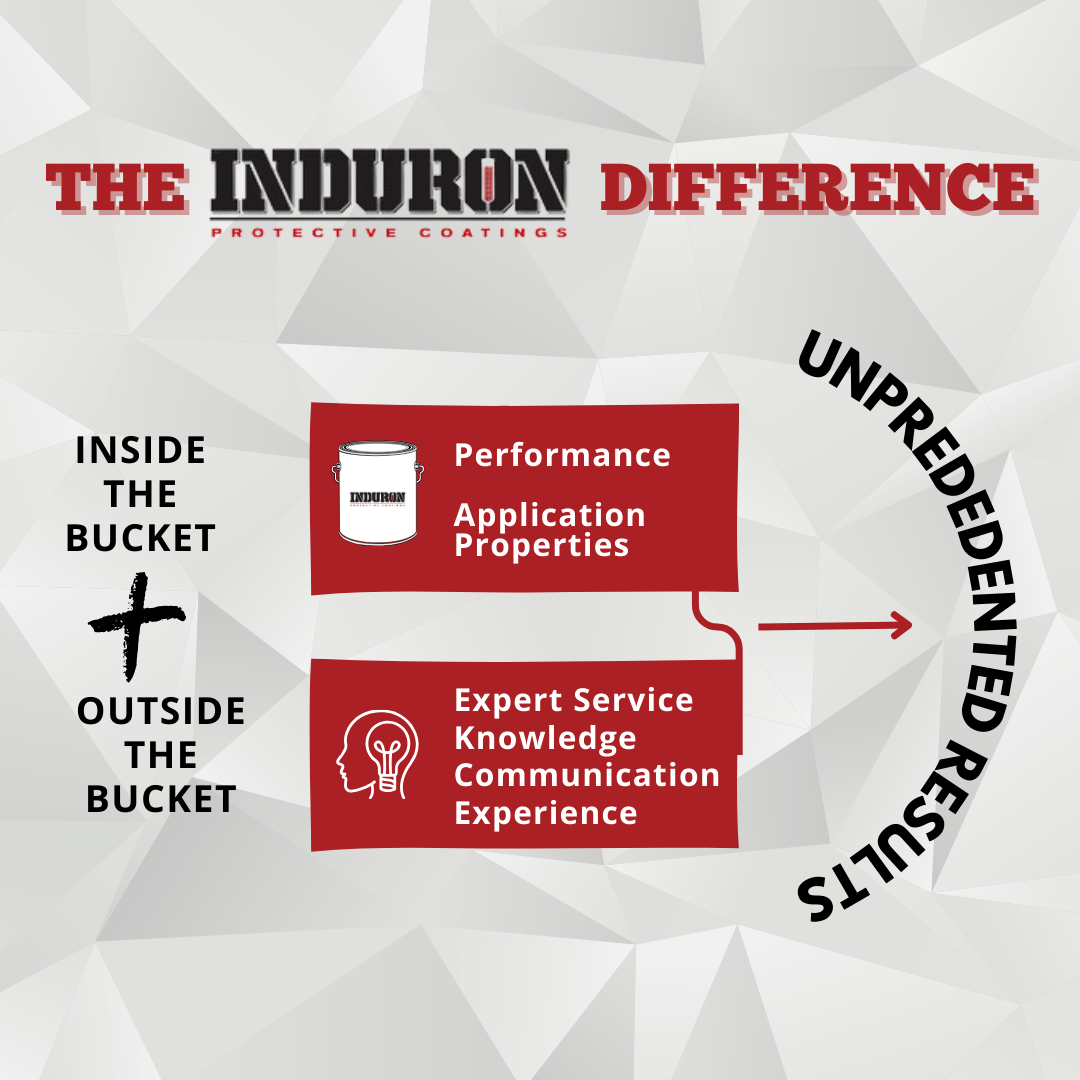By: Andy Odorzynski, Induron National Sales Manager
 I spend the vast majority of my time speaking with clients who are preparing to make 6-figure coatings purchases and attempting to weigh their options. It’s common for the people in these buying/specifying roles to seek parity among suppliers–to create an “apples-to-apples” comparison between multiple products/companies. This journey inevitably leads to commodity thinking: the belief that what’s inside the can is all the same, so it doesn’t really matter.
I spend the vast majority of my time speaking with clients who are preparing to make 6-figure coatings purchases and attempting to weigh their options. It’s common for the people in these buying/specifying roles to seek parity among suppliers–to create an “apples-to-apples” comparison between multiple products/companies. This journey inevitably leads to commodity thinking: the belief that what’s inside the can is all the same, so it doesn’t really matter.
At Induron, we passionately believe the key to understanding why coatings are NOT an interchangeable commodity lies outside the bucket.
What’s “inside the bucket?”
In the can, we are met with physical properties: corrosion resistance, color fastness, gloss, etc… All paint manufacturers can give you a list of these physical properties. Based on datasheet properties one might choose to specify an epoxy/epoxy/urethane coating system to protect their aging asset. Many companies throughout the world supply coatings for such a system. Each company will bring coatings which are slightly different, but fit the same overall category. You can see how this process leads one to the conclusion that they are purchasing a commodity.
We can only really see the impact of differentiation when we pair those “in the bucket” differences with knowledge, experience, and service outside the bucket. Let’s highlight an example using high voltage transmission towers.
What’s “outside the bucket?”
Transmission towers age and are subject to corrosive metal loss over time. Coatings can stop the natural cycle of corrosion and offer these towers an indefinite service life. If one attempted to use the standard Epoxy/Urethane systems we see on bridges, ships, tanks, and other large metal structures, our project would look something like this:
- De-energize the structure
- Contain the structure
- Wash the structure
- Blast the structure
- Prime the structure
- Apply epoxy
- Apply urethane
De-energizing these lines costs the Utility, which owns the tower a fortune, and is often not feasible. Containment, blasting, and washing are all labor intensive steps, which drive up cost exponentially. Each of these operations involves a crew making separate climbs, and every climb represents monetary cost and worker risk. But, this is what industrial coatings look like on infrastructure all over the world: rail cars, wind turbines, pipelines, etc. You name it–the process above is what folks are following for large structures with corrosion risk.
This begs the question: What could changing the coating do to alter this? How could some level of knowledge or service alter this equation? Well, let me tell you about Induron’s process.
Introducing the Induron Process
Induron’s approach to coating transmission towers looks like this:
- Climb up the tower and knock off loose debris with a scraper and wire brush
- On your way down, coat the tower
- Go to the next tower
No need to de-energize because we are not washing and blasting. No need to contain if we aren’t creating that airborne debris.
Our understanding of these structures, their service environment, and the chemistry involved in protecting them allows us to take an entirely different path. One that fundamentally alters the scope of work being undertaken. A web site and a datasheet will never be enough to help a specifier or engineer understand how to select and implement this technology on their own.
It is the expertise and experience of the people at Induron that allows our products to shine and leads our customers to game-changing levels of success.
We are very proud of what’s in our buckets, and we know our products stand above the crowd. BUT, we are even more proud of the outcomes we achieve when those products are paired with expert service “outside the bucket.”
The Induron Difference
All in all, if you make decisions based solely on product data sheets, you will engineer a commodity situation where one should not exist. The great thing is, you don’t have to take my word for it. Involve Induron in planning your next project, and you’ll see the difference for yourself. Contact us to learn more.






